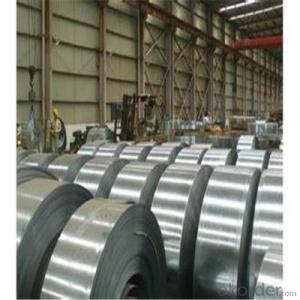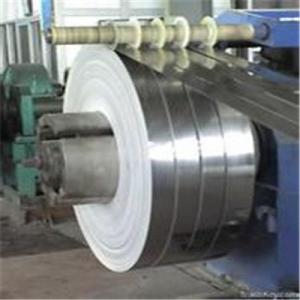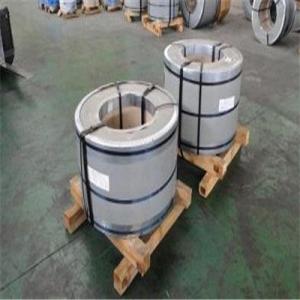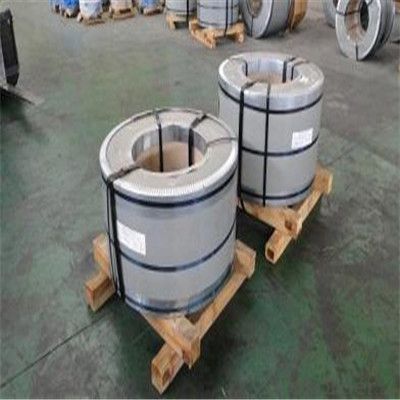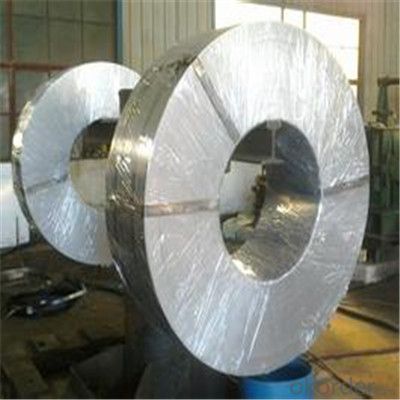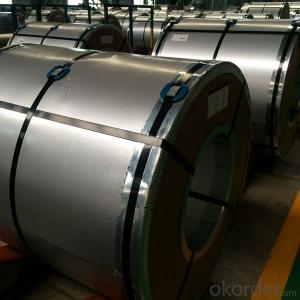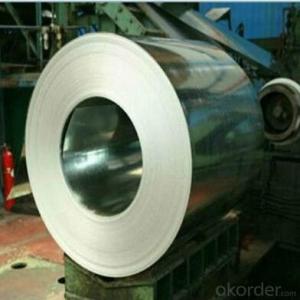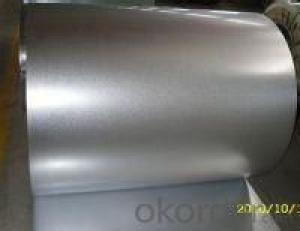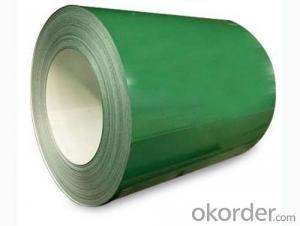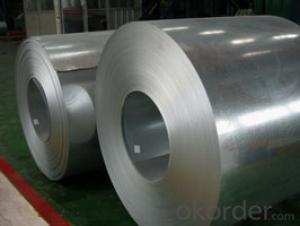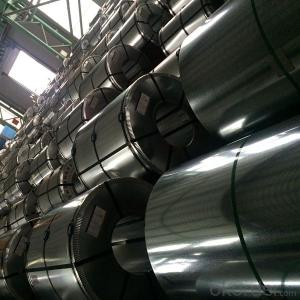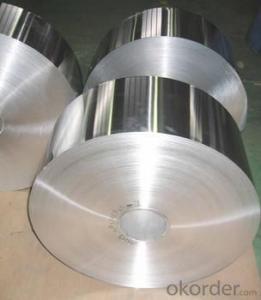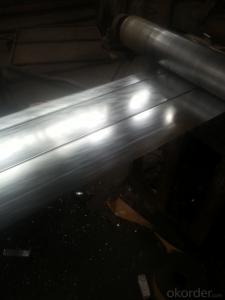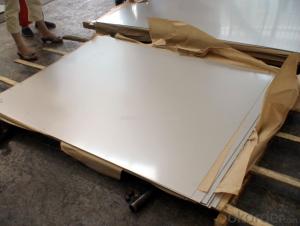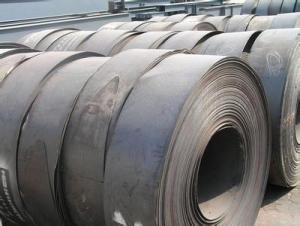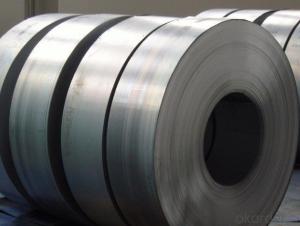Galvanized Steel Strip Coils DX51D in China
- Loading Port:
- Tianjin
- Payment Terms:
- TT OR LC
- Min Order Qty:
- 55 m.t.
- Supply Capability:
- 22232332 m.t./month
OKorder Service Pledge
OKorder Financial Service
You Might Also Like
Specification
Applications of Steel Strip Coils:
1:Chemical industry equipment, Industrial tanks
2:Medical Instruments,Tableware, Kitchen utensil,kitchen ware
Festures of Steel Strip Coils:
1. Each coil is closely covered by oil paper or plastic film.
2. Outside it is firmly packed with sack cloth or compound paper.
3. Steel strap or PP strap to pack the outside to ensure safety.
Specifications of Steel Strip Coils:
| Standard | Galvanized Steel Coil Grade | Zinc Coating | Width | Thickness | Length | Capacity/Year |
| JIS G3302 | SGCH/SGCC-SGC570/SGHC-SGH340 | Z40-275g | 30-914mm | 0.3-4.0mm | Coil | 1,00,000Ton |
| EN 10346 | DX51D+Z/DX53D+Z/S220GD-S550GD | Z40-275g | 30-914mm | 0.3-4.0mm | Coil | 1,00,000Ton |
| ASTM A653 | CS-B/SS255-550 | Z40-275g | 30-914mm | 0.3-4.0mm | Coil | 1,00,000Ton |
Images of Steel Strip Coils:
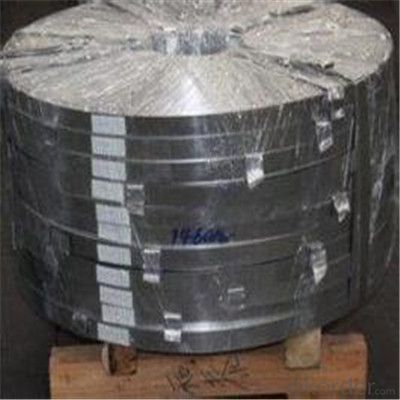
FAQ
1.What's your MOQ?
25MT, it is for one container.
2.Do you have QC teams?
Yeah, sure, our QC team is very important, they will keep the quality control for our products.
3. What's your normal delivery time?
Our delivery time about 10-20days for standard sizes, if you have other requirements like hardness and width ,it is about 20-40days.
- Q: How do steel strips contribute to thermal conductivity in various applications?
- Steel strips contribute to thermal conductivity in various applications due to their high thermal conductivity properties. Thermal conductivity refers to the ability of a material to conduct heat. Steel, being a good conductor of heat, allows for efficient transfer of thermal energy. In applications such as heat exchangers, steel strips are often used as fins or tubes to enhance heat transfer. The high thermal conductivity of steel enables quick and effective heat transfer between the hot and cold fluids, resulting in efficient cooling or heating processes. Moreover, in electrical applications, steel strips are commonly used as core materials in transformers and electrical motors. The high thermal conductivity of steel helps in dissipating heat generated during operation, preventing overheating and ensuring the efficient performance and longevity of these electrical components. Steel strips are also used in the construction industry for various applications such as roofing, cladding, and insulation. In these applications, steel strips contribute to thermal conductivity by providing a pathway for heat transfer. This helps in maintaining a balanced temperature within the building, preventing excessive heat buildup during hot weather and facilitating efficient insulation during cold weather. Furthermore, steel strips are utilized in the manufacturing of cookware, where their high thermal conductivity allows for even distribution of heat across the cooking surface. This ensures that food is cooked uniformly and in a shorter period of time. Overall, steel strips play a crucial role in enhancing thermal conductivity in various applications. Their ability to efficiently transfer heat makes them a preferred choice in industries where thermal management is essential for optimal performance and energy efficiency.
- Q: How are steel strips used in electrical applications?
- Steel strips are commonly used in electrical applications as conductor materials for power transmission and distribution. They are utilized in the manufacturing of various electrical components such as transformers, inductors, and motor cores. Steel strips provide high electrical conductivity and magnetic properties, allowing for efficient energy transfer and electromagnetic field generation.
- Q: How do steel strips perform in terms of dimensional stability?
- Steel strips are known for their excellent dimensional stability. They have very low thermal expansion and contraction rates, meaning they maintain their shape and size even under extreme temperature variations. This makes them highly reliable for applications requiring precise dimensions and consistent performance.
- Q: How do steel strips respond to different surface coating processes?
- Steel strips respond differently to different surface coating processes based on the type of coating applied. For instance, galvanization, which involves coating steel with a layer of zinc, provides excellent corrosion resistance. On the other hand, electroplating with chrome enhances the steel's aesthetic appeal while providing moderate protection against corrosion. Additionally, powder coating offers a durable and decorative finish, while painting enables customization and can provide varying degrees of protection depending on the type of paint used. Ultimately, the response of steel strips to surface coating processes is influenced by the specific coating method and its intended purpose.
- Q: How are steel strips processed for bending?
- Steel strips are processed for bending through a series of steps that involve heating, rolling, and cooling the strips. This process, known as hot rolling, helps to soften the steel and make it more pliable for bending. Additionally, lubricants are often used during the bending process to reduce friction and ensure smooth and accurate bending of the steel strips.
- Q: How are steel strips processed for specific applications?
- Steel strips are processed for specific applications using various techniques. The first step in the process is to select the appropriate type of steel for the desired application. This could be carbon steel, stainless steel, or any other type of steel with specific properties required for the application. Once the steel strip is selected, it undergoes a series of processing steps. The first step is usually cleaning and pickling, where the strip is treated with chemicals to remove any impurities and scale from the surface. This improves the strip's surface quality and prepares it for further processing. After cleaning, the strip may be rolled or annealed to achieve the desired thickness and mechanical properties. Rolling involves passing the strip through a series of rollers, gradually reducing its thickness. Annealing, on the other hand, involves heating the strip to a specific temperature and then slowly cooling it to improve its ductility and reduce internal stresses. Depending on the application, the strip may also undergo additional processing steps such as tempering, galvanizing, or coating. Tempering is a heat treatment process that improves the strip's toughness and strength. Galvanizing involves applying a protective zinc coating to prevent corrosion. Coating, on the other hand, can involve applying a layer of paint, polymer, or other materials to enhance the strip's appearance or provide additional protection. Once the steel strip is processed according to the specific application requirements, it can be further fabricated into various products. These products can include automotive components, construction materials, electrical equipment, or even household appliances. The processed steel strips are often cut, stamped, formed, or welded to achieve the desired shape and functionality. In conclusion, steel strips are processed for specific applications by selecting the appropriate type of steel, cleaning and pickling, rolling or annealing, and applying additional treatments such as tempering, galvanizing, or coating. The processed steel strips are then fabricated into various products to meet the specific needs of different industries.
- Q: How do steel strips compare to other materials in terms of corrosion resistance?
- Steel strips generally have good corrosion resistance compared to many other materials. The addition of elements such as chromium or zinc can enhance their corrosion resistance further. However, some materials like stainless steel or aluminum may offer even better resistance to corrosion in certain environments.
- Q: What are the main factors affecting the surface flatness of steel strips?
- The main factors affecting the surface flatness of steel strips are the quality of the raw material used, the rolling process used to shape the strip, the condition of the rolling mill equipment, the tension applied during rolling, and any subsequent thermal or mechanical treatments applied to the strip.
- Q: Are steel strips suitable for the production of metal cabinets?
- Yes, steel strips are suitable for the production of metal cabinets. Steel is a strong and durable material that provides excellent structural integrity and corrosion resistance, making it ideal for cabinets that need to withstand heavy loads and environmental factors. Additionally, steel strips can be easily formed and shaped into various cabinet components, allowing for flexibility in design and customization.
- Q: Can steel strips be used in the production of consumer goods?
- Yes, steel strips can indeed be used in the production of consumer goods. Steel strips are versatile and can be used in various industries such as automotive, construction, and appliances. They are commonly used for manufacturing components like brackets, clips, hinges, and springs, which are crucial in the production of consumer goods. The durability, strength, and corrosion-resistant properties of steel make it a preferred material for many consumer products, ensuring longevity and reliability.
Send your message to us
Galvanized Steel Strip Coils DX51D in China
- Loading Port:
- Tianjin
- Payment Terms:
- TT OR LC
- Min Order Qty:
- 55 m.t.
- Supply Capability:
- 22232332 m.t./month
OKorder Service Pledge
OKorder Financial Service
Similar products
Hot products
Hot Searches
Related keywords
